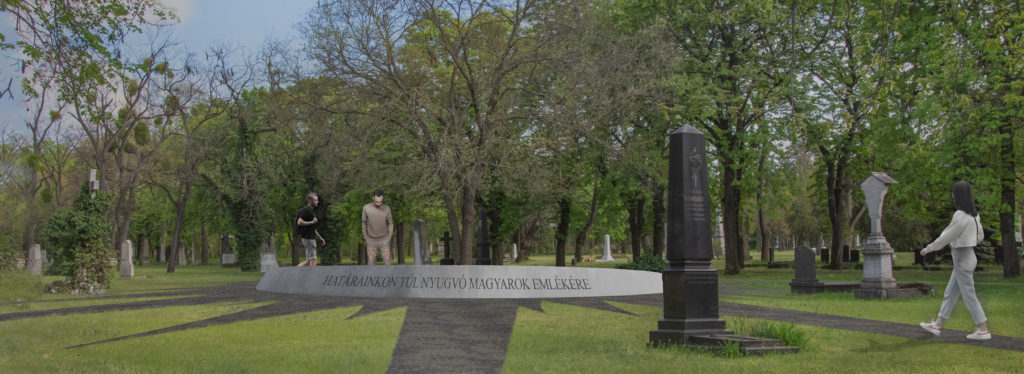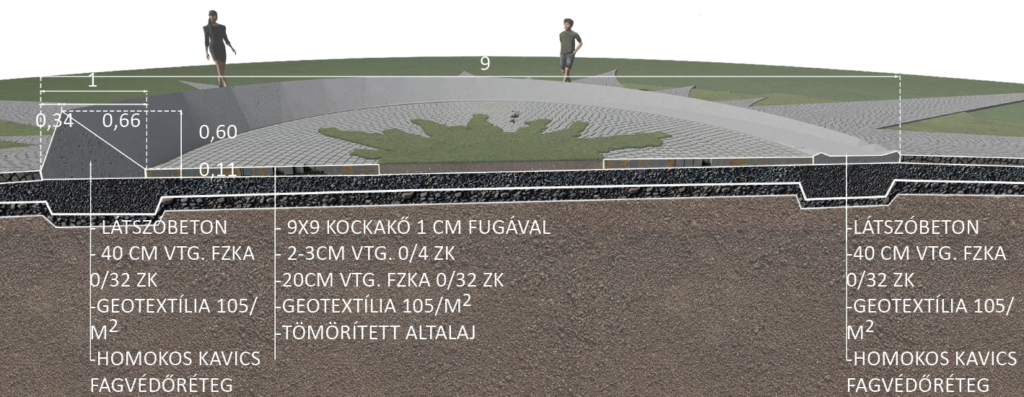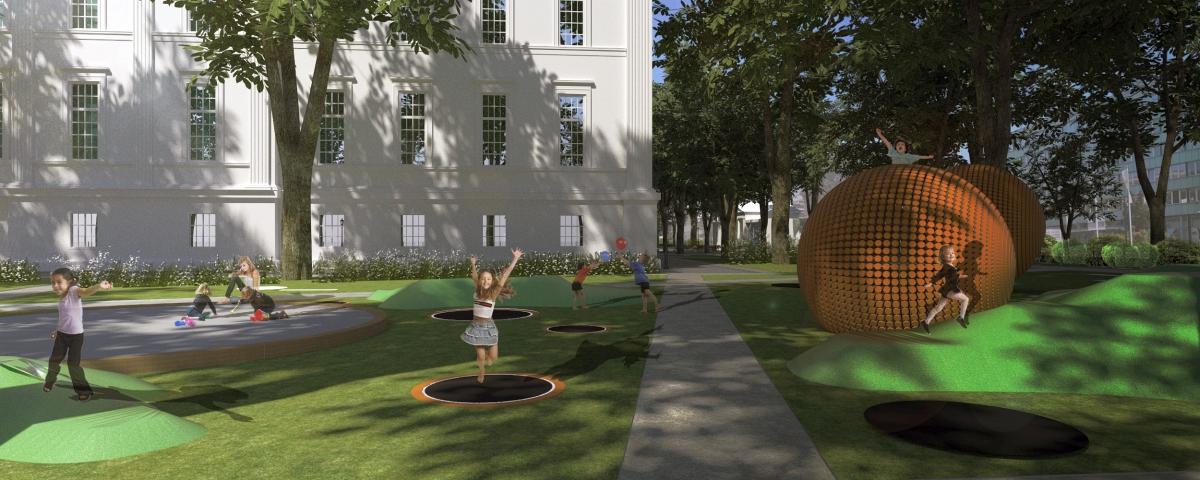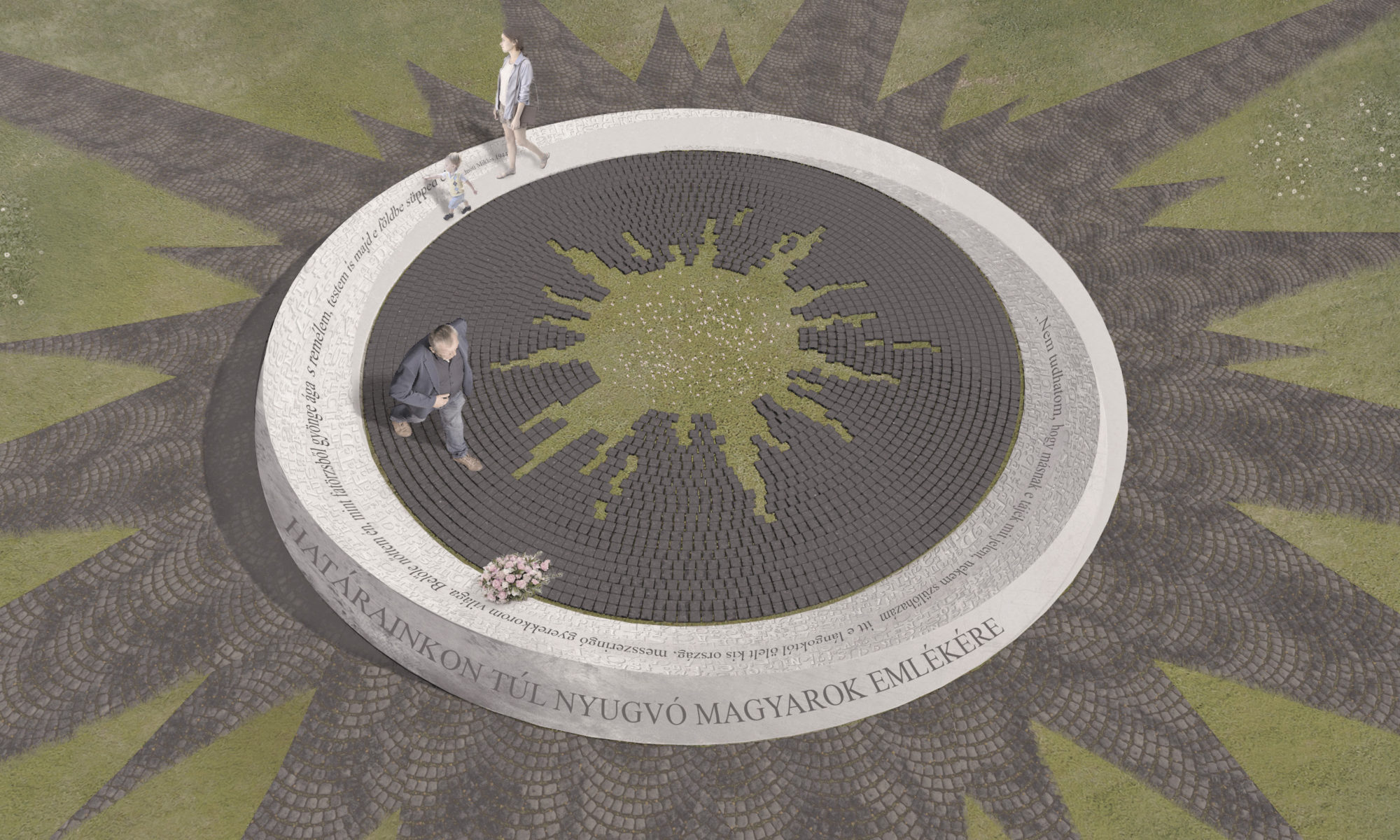Location: Hungarian National Cemetery
Topic: Place of remembrance of Hungarians resting beyond our borders
Year: 2023.
Designers: Hungarian University of Agricultural and Life Sciences Institute of Landscape Architecture, Urban Planning and Garden Art Department of Garden and Open Space Design – the joint work of academics – Balazs Almasi, Miklós Pap -, landscape architecture and garden art students – Rebeka Bokor, Eszter Dani, István Dávid Debreczeni, Dorottya Ébner, Gáspár István Ferdinandy, Dóra Fogarasi, Gergely Galács, Bence Áron Gärtner, Zita Fanni Holicza, Lenke Karácsony, Panna Angelika Sajben, Ábris Tüske, Virág Vig

The memorial will be located on the eastern part of plot 29/3, taking into account the position of the graves and existing trees. The paved surface surrounding the memorial will also allow access from Arany János Road and Stróbl Alajos Road. A resting area under an existing solitary alder tree (Alnus spp.) with a circular bench around the tree is planned further away from the monument.

In our design, the home appears as a closed ring in plan view, but the concrete body, which gradually rises in space, opens up at one point and gives way to the centre of the ring. This shape, reminiscent of the Carpathian mountain range, delicately separates the interior of the ring from its surroundings, enclosing and protecting the visitor. The exposed concrete forms a precise, high-quality surface that clearly reproduces the intended shape.

On the steeper outer arch of the memorial, the name of the memorial site – In Memory of Hungarians Resting Beyond Our Borders – can be read, while on the inner arch, among the countless letters, the poem by Miklós Radnóti entitled I Cannot Know… stands out, evoking the feeling of attachment to the homeland. The desire to be buried in the land where he was born remains only a hope. The initials of the hundreds of thousands of people who were separated from their homeland can be read in the random letters that appear on the inside of the concrete memorial. The inscription on the outer arch can be read from the roads surrounding the plot, from the direction of arrival, while the poem fragment can only be read from close up, from inside the monument. The central part of the monument thus becomes a space for personal commemoration. During the commemoration, it is possible to place candles on either side of the monument, highlighting the concrete object and the inscriptions on it.

The cobbled pavement surrounding the monument runs radially, reaching the roads surrounding the plot in several places, ensuring access over the paved surface. The larger pavement also provides a venue for events. The cobblestones, as a unifying element, show the relationship between individuals and the multitude, and in the interior space, they give a sense of the absence of the displaced and the displaced from their homeland.

The memorial ring is made of high performance concrete (HPC), light-coloured, cast in a workshop, and consists of 24 individual elements. This size even allows the elements to be moved without a crane. The letters appear as a marbled surface on the concrete body, and the lettering is also painted black. The highest point of the concrete body rises 60 cm from the pavement.

The monument is surrounded by a 9×9 cm andesite pebble pavement with a stainless steel border. The resting place is covered with a stabilized scattered pavement without binder, the wearing course is fine fraction limestone chippings, the border is stainless steel, similar to the cobble pavement. Both pavements have good water permeability. The wood is surrounded by a circular bench (Radius bench, Aba-Szer Metal Furniture).
At the southern approach from Arany János road, an information board has been placed with a short summary of the circumstances of the memorial site. The information board is the standard board of the Cemetery on Fiumei út and is made of stainless steel. We propose to plant Hungarian carnations (Dianthus pontederae) in the centre of the memorial, in place of the worn-out paving.

